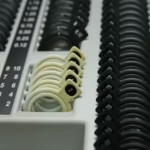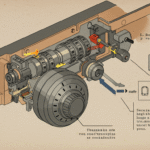ou hear a quiet drip, maybe now and then. Nothing dramatic. But over time, that seemingly harmless drip can escalate into something you never expected—water damage, mould, or even system failure. Whether it’s from your HVAC unit, your boiler, or your refrigerator, that hidden moisture has a knack for showing up in all the wrong places at the worst possible time.
Understanding how small leaks form, where they tend to go wrong, and what to look out for can save you thousands in repairs—not to mention headaches you never signed up for.
The Hidden Culprit Behind Many Leaks
It’s not always the obvious plumbing issues that create trouble. In many homes and workplaces, HVAC systems quietly work away in the background, pulling humidity from the air. That moisture needs somewhere to go, and that’s where condensate pumps come in.
These small, often overlooked devices are designed to collect and remove water that forms during the cooling or heating process. If the pump fails—or if it’s installed incorrectly—water can start to pool in areas you don’t check often. Over time, that can lead to mildew, flooring damage, or worse, rot in the walls or ceilings.
Why These Leaks Go Undetected
The problem with slow, hidden leaks is that they don’t scream for attention. They whisper. By the time you notice water stains or smell something musty, the damage is often well underway. And unfortunately, many people don’t associate HVAC systems with potential leaks, so they look everywhere but the real source.
There’s also the issue of seasonality. Your air conditioner might only be running hard a few months of the year, so the buildup is gradual. That makes it harder to spot a consistent pattern—until a plumber hands you the bill.
Signs You Might Have a Hidden Leak
Don’t wait for a big, soggy surprise. Watch out for:
- Unusual smells: Musty, damp odours are often the first sign.
- Water pooling near your unit: Especially in basements or near HVAC systems.
- Increased humidity indoors: Your space may feel more damp or clammy than usual.
- Ceiling or wall discolouration: Especially near vents or air ducts.
- The sound of dripping: Even faint, irregular drips can indicate trouble.
If you notice any of these signs, it’s worth inspecting the system or calling in a professional to have a look before things escalate.
Preventative Measures You Can Take
While it’s not realistic to eliminate all risks, you can reduce the chances of a surprise leak significantly with a few proactive steps:
1. Regular Maintenance Checks
Schedule inspections for your HVAC system at least once a year. Ensure the technician checks the drainage and condensate removal systems, not just the air filters and thermostat.
2. Test the Pump
If you’re comfortable doing so, pour a small amount of water into the condensate tray and observe whether the pump activates and drains it correctly. If it struggles, runs noisily, or doesn’t activate at all, it may need repair or replacement.
3. Keep Drain Lines Clear
Mould, algae, and debris can clog drain lines over time. You can flush them with a small amount of white vinegar every few months to help keep them clean. Make sure to shut off the system before doing this.
4. Install a Leak Detector
There are simple, battery-powered leak detectors that can sit beneath HVAC units or near pumps. If water accumulates, you’ll be alerted before major damage occurs.
When It’s Time to Call a Pro
Sometimes, DIY just won’t cut it. If you notice consistent moisture, visible damage, or repeated pump failures, it’s time to bring in a technician. They can diagnose whether the issue is a faulty pump, a blockage, or something more serious like structural damage caused by prolonged dampness.
A good technician can also recommend upgrades, such as smarter pump systems or better drainage setups, especially if your space has had recurring issues.
Don’t Underestimate the Drip
We tend to focus on big, flashy problems in our homes and offices—the broken heater, the tripped circuit, the obvious flood. But slow water leaks caused by malfunctioning or neglected components often cost more over time, precisely because we don’t notice them soon enough.
So next time you walk past your HVAC unit, give it a second look. That small drip might be trying to tell you something. And the sooner you catch it, the less likely it is to turn into a full-blown disaster.
Would you like a second article idea using the same anchor text or niche?











